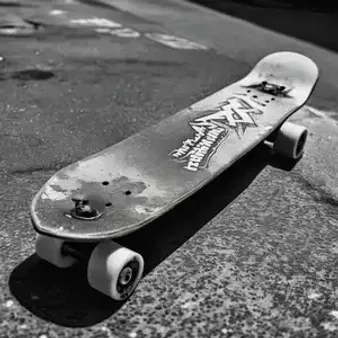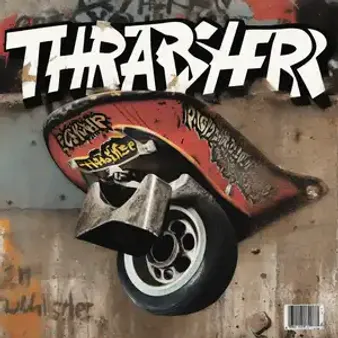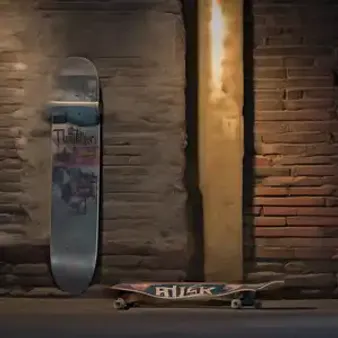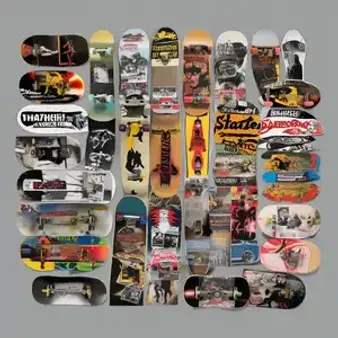Table of Contents
kizworld dives deep into the gritty world of skateboarding with a look at Thrasher magazine’s iconic first cover. We'll explore its history, its impact on skateboarding culture, and its lasting legacy as a symbol of rebellion and authenticity. From its humble beginnings to its current status as a cultural icon, the thrasher first cover story is a wild ride through the evolution of skateboarding.
Feature | Information |
|---|---|
Year | 1981 |
Photographer | Mofo (Ray Pettit) |
Skaters Featured | Unknown |
Location | Ramp in San Francisco |
Significance | Marked the debut of Thrasher magazine, capturing the raw energy and rebellious spirit of skateboarding. |
The History Behind Thrasher's Iconic First Cover
Picture this: It's 1981. Skateboarding is still finding its feet, all raw energy and rebellious spirit. That's when Thrasher magazine decided to shake things up, launching their very first issue with a bang. The thrasher first cover wasn't some polished studio shot, it was a gritty black and white photo of a skateboarder caught mid-air, shot by legendary skate photographer Mofo. No fancy logos, no celebrity endorsements, just pure skateboarding grit. It was a statement that this magazine was for the skaters, by the skaters. This bold move set the stage for Thrasher to become the voice of skateboarding, a title it still holds dear today.
The History Behind Thrasher's Iconic First Cover
The Impact of Thrasher's First Cover on Skateboarding Culture
That first cover wasn't just a photo; it was a statement. It showed the world that skateboarding wasn't just a fad, it was a raw and rebellious culture. Suddenly, every kid who ever ollied a curb or dropped into a ramp felt seen. Thrasher became their bible, a magazine that spoke their language and celebrated their passion. It helped skateboarding grow from a fringe activity to a global phenomenon. Think about it – how many other sports have a magazine cover that's instantly recognizable as a symbol of the entire culture? That's the power Thrasher's first cover had, and continues to have, on skateboarding.
- https://kizworld.vn/skateboard-back-pack/
- https://kizworld.vn/skate-tony-hawk/
- https://kizworld.vn/wknd-skateboards/
Element | Description |
|---|---|
Impact | Established Thrasher as the voice of skateboarding culture. |
Reach | Helped propel skateboarding from a niche activity to a global phenomenon. |
Legacy | The cover remains an enduring symbol of skateboarding's rebellious spirit and authenticity. |
The Impact of Thrasher's First Cover on Skateboarding Culture
Thrasher First Cover: A Legacy of Rebellion and Authenticity
That black and white photo of a skater frozen in mid-air? That's not just a cool picture, it's a symbol. Imagine a secret handshake that only skaters know – that's what the thrasher first cover is like. It tells everyone, "This is us. This is skateboarding." It's raw, it's real, and it's been screaming "skate or die" since 1981. It's like the cover of a favorite comic book, except instead of superheroes, it's regular kids doing extraordinary things on four wheels. It's no wonder people still hang this cover on their walls like a prized possession.
- https://kizworld.vn/skateboard-back-pack/
- https://kizworld.vn/skate-tony-hawk/
- https://kizworld.vn/wknd-skateboards/
Element | Description |
|---|---|
Visual Style | Gritty, black and white photography, capturing the raw energy of skateboarding. |
Message | Unapologetically rebellious, celebrating the outsider status of skateboarding. |
Impact | Became an instantly recognizable symbol of skateboarding culture and attitude. |
Thrasher First Cover: A Legacy of Rebellion and Authenticity
Thrasher Covers Through the Years: From Grit to Glory
After that legendary first cover, Thrasher didn't slow down. They kept pushing boundaries, showcasing the raddest skaters and craziest stunts. Flip through any issue, and you'll find a visual history of skateboarding's evolution. From the gnarly ramp days to the rise of street skating, Thrasher's covers have always captured the heart and soul of this ever-evolving sport. Think of it like a yearbook, but instead of awkward school photos, it's full of epic bails, mind-blowing tricks, and the skaters who made it all happen.
One thing that's remained constant? That unmistakable Thrasher vibe. It's raw, it's rebellious, and it never takes itself too seriously. Sure, they've featured legends like Tony Hawk and Jamie Thomas. But they've also given a platform to the underdogs, the unknowns, the skaters who embody the true spirit of skateboarding. That's what makes Thrasher more than just a magazine—it's a community, a family, a badge of honor for anyone who's ever rolled on four wheels. It's like that friend who's always down for an adventure, no matter how crazy. And that's what keeps us coming back for more, year after year, decade after decade.
The Evolution of Style
Early Thrasher covers were all about raw energy. Imagine a rocket taking off – that's the kind of intensity you'd see. Skaters caught mid-air, defying gravity in gritty black and white. Over time, things got more experimental. They played with color, composition, even humor. One cover might be a work of art, the next a hilarious prank gone right. But no matter the style, Thrasher always stayed true to its core: showcasing the skaters and the skateboarding that mattered.
Decade | Style Trends |
|---|---|
1980s | Gritty black and white photography, focus on vert skating and raw energy. |
1990s | Introduction of color, more experimental photography and layouts, rise of street skating. |
2000s - Present | Diverse photography styles, from artistic to humorous, celebrating both skateboarding legends and up-and-comers. |
From Covers to Culture
Thrasher covers didn't just reflect skateboarding culture—they helped shape it. That iconic logo? It's more than just a magazine title, it's a badge of honor. You see it on t-shirts, backpacks, even tattoos. It's a sign that you're part of something bigger, a community that lives and breathes skateboarding. Remember that feeling of belonging you get with your best friends? That's what Thrasher represents for a lot of people.
Thrasher Covers Through the Years: From Grit to Glory
Final Thought
The Thrasher first cover wasn't just a magazine cover; it was a statement. It captured the raw energy, rebellious spirit, and unapologetic attitude of skateboarding in the early '80s. It cemented Thrasher's place as the skateboarder's bible, a title it still holds today. The cover continues to inspire, provoke, and remind us of the power of authenticity and the enduring spirit of skateboarding.